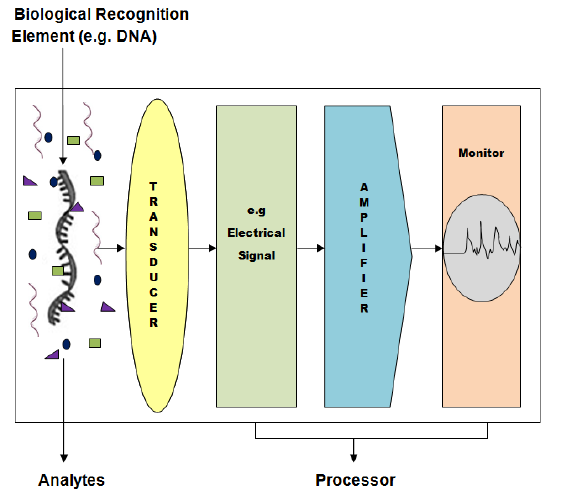(Nano Biosensing) Surface Sensitive Nano Biosensors and Nano Biosypes (PhD Nano _ Microelectronics)
Researcher and author: Dr. ( Afshin Rashid)
Nano-sensors nano bio-sensors seem to be a powerful alternative to conventional analytical techniques, as nano-sensors perform highly sensitive, real-time, high-frequency monitoring of pollutants without large-scale sampling. Integrate nano-biosensors for rapid screening and monitoring of a wide range of contaminants in small devices. Because the nano-biosensor is an analytical device used to detect a chemical, which combines a biological component with a physicochemical detector. A biologically sensitive element , e.g., tissue, microorganisms , etc., is a component of a biomimetic material that interacts with nanoparticles.A biosensor typically consists of a bioreceptor (enzyme / antibody / cell / nucleic acid / aptamer), a transducer component (semiconductor / nanomaterial), and an electronic system that includes a signal amplifier , processor, and screen. Show. Converters and electronics can be combined, for example, in CMOS-based microsensor systems . The identification component, often referred to as a biological receptor, uses the biomolecules of living organisms or organisms modeled after biological systems to interact with the assay of interest. This interaction is measured by the transmitter transmitter, which shows a measurable signal proportional to the presence of the target analyte in the sample.
Conclusion :
The dynamic process of accurate sorting and positioning of nanoparticle biomass is crucial in predefined microstructures, however, it is a major obstacle to the research of surface-sensitive nanobiosensors and practical nanocompatible nanocomponents. .
Researcher and author: Dr. ( Afshin Rashid)
PhD in Nano-Microelectronics




